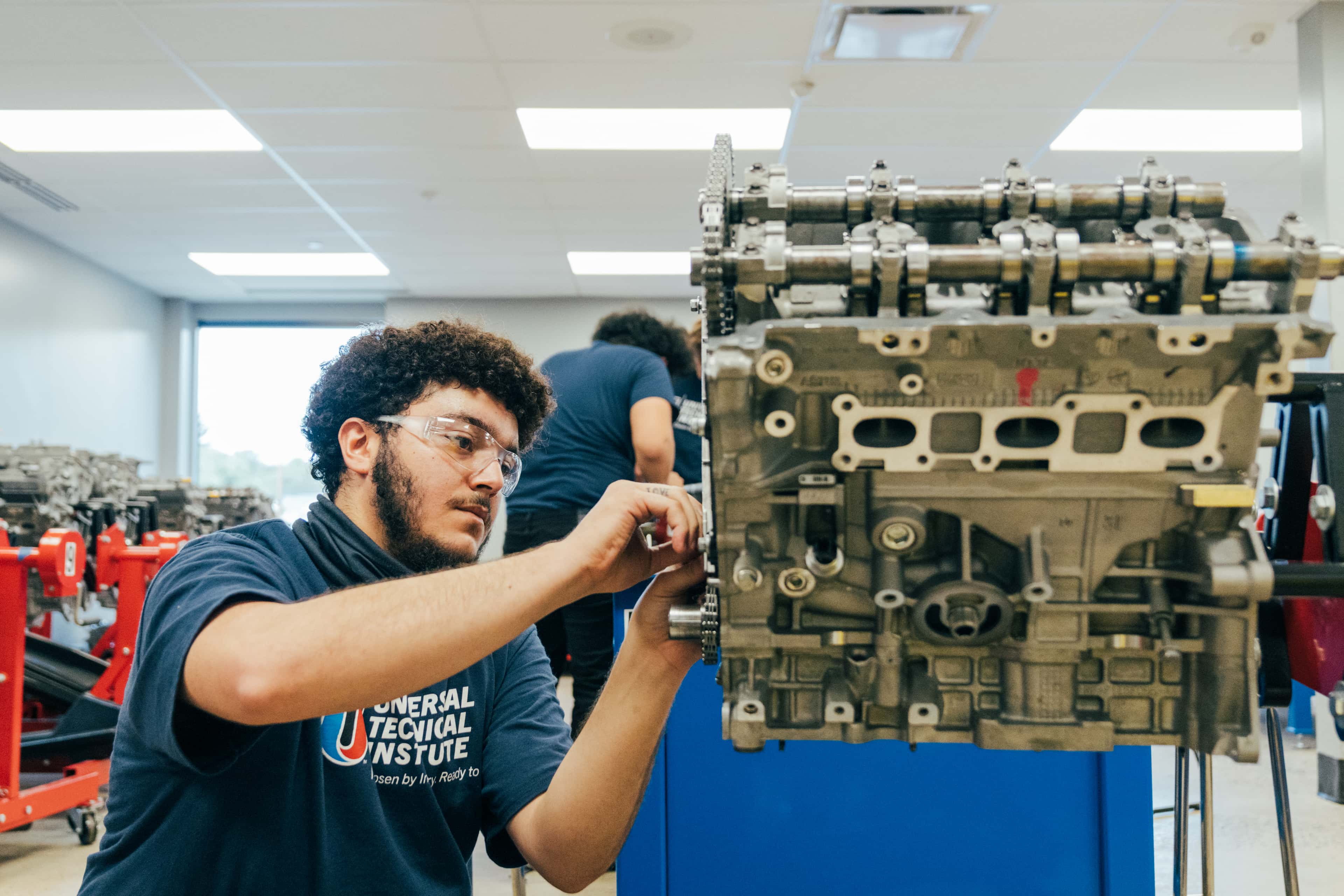UTI’s engine function course, Introduction to Automotive Physical Science: Engine Design and Function, provides a comprehensive understanding of internal combustion engines, focusing on the critical components and systems that make them run.*
*This course is only included at campuses offering the Automotive & EV Technology and Automotive/Diesel & EV Technology programs.
What You'll Learn in Engine Design and Function Training
The purpose of the engine design course is to provide students with knowledge of fundamental engine repair and operation. This course equips them with the skills to confidently diagnose, service and repair engines.

Course topics cover:
Internal Combustion Engine Basics
Understand the critical components of an engine, including how they work together to create power. Students will explore the science behind combustion, power generation and engine efficiency.
Identifying Essential Engine Components
Students will be taught how to recognize and understand the purpose of pistons, crankshafts, camshafts, valves, spark plugs and other key parts that keep an engine running.
Diagnosing Engine Mechanical Issues
The goal of this part of the engine function course is to help students develop diagnostic skills to identify mechanical problems.
Step-by-Step Engine Servicing Techniques
Students gain hands-on training experience performing essential maintenance and repair tasks such as disassembling and reassembling engine components, replacing worn parts and fine-tuning systems for optimal performance.18
Building Real-World Problem-Solving Skills
Instructors focus on guiding students to think like a real-world mechanic by troubleshooting common engine concerns and finding efficient, reliable solutions to mechanical challenges.
Learn All About Engine Design and Function at UTI!
Designed to build a strong foundation in engine mechanics, the engine design and function course helps students gain the confidence they need for a career as an automotive technician.1
This is a key part of the 51-week Automotive Technology program.7 For more info, visit our program page or connect with us today!
Frequently Asked Questions
An internal combustion engine performs four primary functions, often referred to as the four-stroke cycle. These include intake, compression, combustion and exhaust.
Some of the most common engine configurations include inline engines, v-type engines, flat engines and rotary engines.
In the engine design and function course, Introduction to Automotive Physical Science: Engine Design and Function, students gain foundational knowledge of internal combustion engines. You’ll learn about the differences in operation between gasoline and diesel engines, specific components about each engine type and maintenance procedures that are relevant to both.
Yes, the engine design and function course covers both diesel and gasoline engine components so that students are well-versed in servicing a variety of engine systems.
The engine design and function course is not a prerequisite for UTI’s Automotive & EV Technology training program. This course is a part of a foundational curriculum that builds on knowledge students learn throughout their training in the program.

